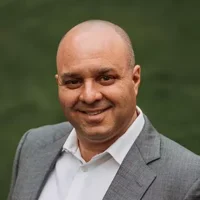Having spent years rounding at hospitals, I have encountered every conceivable interaction between doctors and nurses. Being on the same team focused on delivering quality care to patients, most of the encounters have been pleasant and productive, yet there are inevitably clashes in personality and natural power struggles that occur.
My first introduction to the friction between these two professions was in medical school. There was quite a bit of hostility between residents and nurses where I trained, and this trickled down nicely to medical students rotating through the hospital. It was bothersome to me because we were all supposed to be on the same team, and this was messing with my naive and altruistic view of the universe. In general, there seemed to be basic mistrust, peppered with unnecessary arrogance (mostly on the residents’ part). There were obvious communication gaps which continuously fueled the mistrust fire.
One day I was asked to participate in a pilot project aimed at bridging the rift between doctors and nurses. The hypothesis was that there was a lack of mutual understanding of basic duties and this lack of insight translated into resentment and mistrust. This program involved medical students shadowing a nurse for a week, wearing the hat of nurse assistant instead of a medical student. Similarly, that same nurse had to spend a week on rounds with the same medical student, seeing the world from their perspective as well.
So, I showed up for work as a nursing assistant confident that this would be a holiday from my typical duties as a medical student. I could not have been more wrong. I realized that I had no idea what nurses were up against all day. Notwithstanding the direct patient care duties, which are constant responsibilities during the shift, nurses were the middleware between every service and discipline in the hospital. I watched in awe as my nurse coordinated care between doctors, pharmacy, radiology, and patient families. It was a daunting task, which she took on without hesitation as she simultaneously changed sheets, administered medications, and helped cover fellow nurses on the ward. And then I saw how my own colleagues treated us. Yes, I said us. That week I felt as though we were a team, working together furiously to take care of patients. So, I took it personally when doctors and other hospital staff simply didn’t understand.
When it was her turn to round with me she was equally awestruck. She too had no conception of how many directions we were torn in, and how constant interruptions got in the way of any resemblance of a routine. She also saw how nurses treated us and appreciated from our perspective why we weren’t calling back right away, and why we hesitated writing orders. She saw the disconnect.
Open lines of communication between doctors and nurses is an essential ingredient to a healthy collaborative relationship. Mutual respect and understanding are needed to avoid misconceptions between these two disciplines. I am grateful to my medical school for providing me with the opportunity to see hospital life from a nursing perspective, and the satisfaction of giving this nurse a white-glove tour of my world.
HybridChart was developed by a practicing physician, for physicians.







